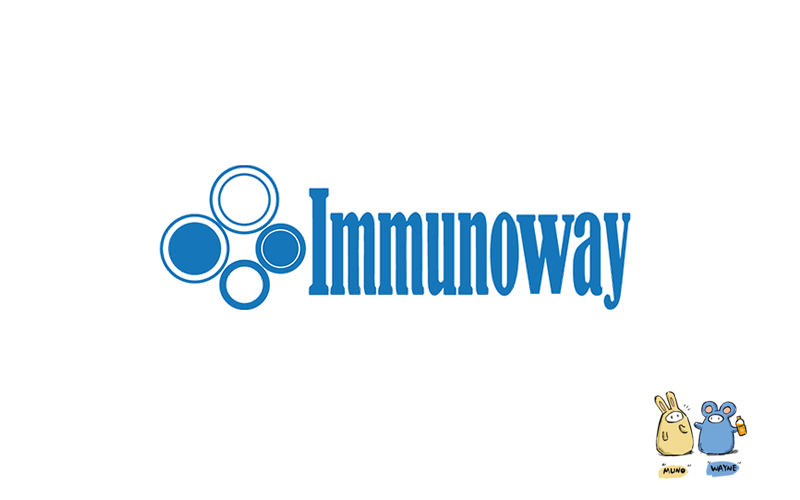
主要信息
Target
MATN3
Host Species
Rabbit
Reactivity
Human, Mouse
Applications
WB, ELISA
MW
53kD (Observed)
Conjugate/Modification
Unmodified

货号: YN1944
规格
价格
货期
数量
200μL
¥3,780.00
现货
0
100μL
¥2,300.00
现货
0
40μL
¥960.00
现货
0
加入购物车


已收藏


收藏
详细信息
推荐稀释比
WB 1:500-2000; ELISA 1:5000-20000
组成
Liquid in PBS containing 50% glycerol, 0.5% BSA and 0.02% sodium azide.
特异性
MATN3 Polyclonal Antibody detects endogenous levels of protein.
纯化工艺
The antibody was affinity-purified from rabbit antiserum by affinity-chromatography using epitope-specific immunogen.
储存
-15°C to -25°C/1 year(Do not lower than -25°C)
浓度
1 mg/ml
实测条带
53kD
修饰
Unmodified
克隆性
Polyclonal
同种型
IgG
相关产品
抗原&靶点信息
免疫原:
Synthesized peptide derived from part region of human protein
展开内容
特异性:
MATN3 Polyclonal Antibody detects endogenous levels of protein.
展开内容
基因名称:
MATN3
展开内容
蛋白名称:
Matrilin-3
展开内容
背景:
This gene encodes a member of von Willebrand factor A domain containing protein family. This family of proteins is thought to be involved in the formation of filamentous networks in the extracellular matrices of various tissues. This protein contains two von Willebrand factor A domains; it is present in the cartilage extracellular matrix and has a role in the development and homeostasis of cartilage and bone. Mutations in this gene result in multiple epiphyseal dysplasia. [provided by RefSeq, Jul 2008],
展开内容
功能:
Disease:Defects in MATN3 are the cause of multiple epiphyseal dysplasia type 5 (EDM5) [MIM:607078]. EDM is a generalized skeletal dysplasia associated with significant morbidity. Joint pain, joint deformity, waddling gait, and short stature are the main clinical signs and symptoms. EDM is broadly categorized into the more severe Fairbank and the milder Ribbing types. EDM5 is relatively mild and clinically variable. It is primarily characterized by delayed and irregular ossification of the epiphyses and early-onset osteoarthritis.,Disease:Defects in MATN3 are the cause of spondyloepimetaphyseal dysplasia bowed-legs type (SEMD bowed-legs type) [MIM:608728]; also known as matrilin-3 related SEMD. Affected individuals show disproportionate early-onset dwarfism, bowing of the lower limbs, lumbar lordosis and normal hands. Skeletal abnormalities include short, wide and stocky long bones with severe epiphyseal and metaphyseal changes, hypoplastic iliac bones and flat, ovoid vertebral bodies. SEMD bowed-legs type inheritance is autosomal recessive.,Disease:Genetic variations in MATN3 are associated with osteoarthritis susceptibility type 2 (OS2) [MIM:140600]; also called osteoarthritis of distal interphalangeal joints (OADIP) or hand osteoarthritis (HOA). In the hand, osteoarthritis can develop in the distal interphalangeal and the first carpometacarpal (base of thumb) and proximal interphalangeal joints. Patients with osteoarthritis may have one, a few, or all of these sites affected.,Function:Major component of the extracellular matrix of cartilage and may play a role in the formation of extracellular filamentous networks.,similarity:Contains 1 VWFA domain.,similarity:Contains 4 EGF-like domains.,subunit:Can form homooligomers (monomers, dimers, trimers and tetramers) and heterooligomers with matrilin-1.,tissue specificity:Expressed only in cartilaginous tissues, such as vertebrae, ribs and shoulders.,
展开内容
细胞定位:
Secreted .
展开内容
组织表达:
Expressed only in cartilaginous tissues, such as vertebrae, ribs and shoulders.
展开内容
文献引用({{totalcount}})
货号: YN1944
规格
价格
货期
数量
200μL
¥3,780.00
现货
0
100μL
¥2,300.00
现货
0
40μL
¥960.00
现货
0
加入购物车


已收藏


收藏
Recently Viewed Products
Clear allToggle night Mode
{{pinfoXq.title || ''}}
Catalog: {{pinfoXq.catalog || ''}}
Filter:
All
{{item.name}}
{{pinfo.title}}
-{{pinfo.catalog}}
主要信息
Target
{{pinfo.target}}
Reactivity
{{pinfo.react}}
Applications
{{pinfo.applicat}}
Conjugate/Modification
{{pinfo.coupling}}/{{pinfo.modific}}
MW (kDa)
{{pinfo.mwcalc}}
Host Species
{{pinfo.hostspec}}
Isotype
{{pinfo.isotype}}
产品 {{index}}/{{pcount}}
上一个产品
下一个产品
{{pvTitle}}
滚轮缩放图片
{{pvDescr}}




















